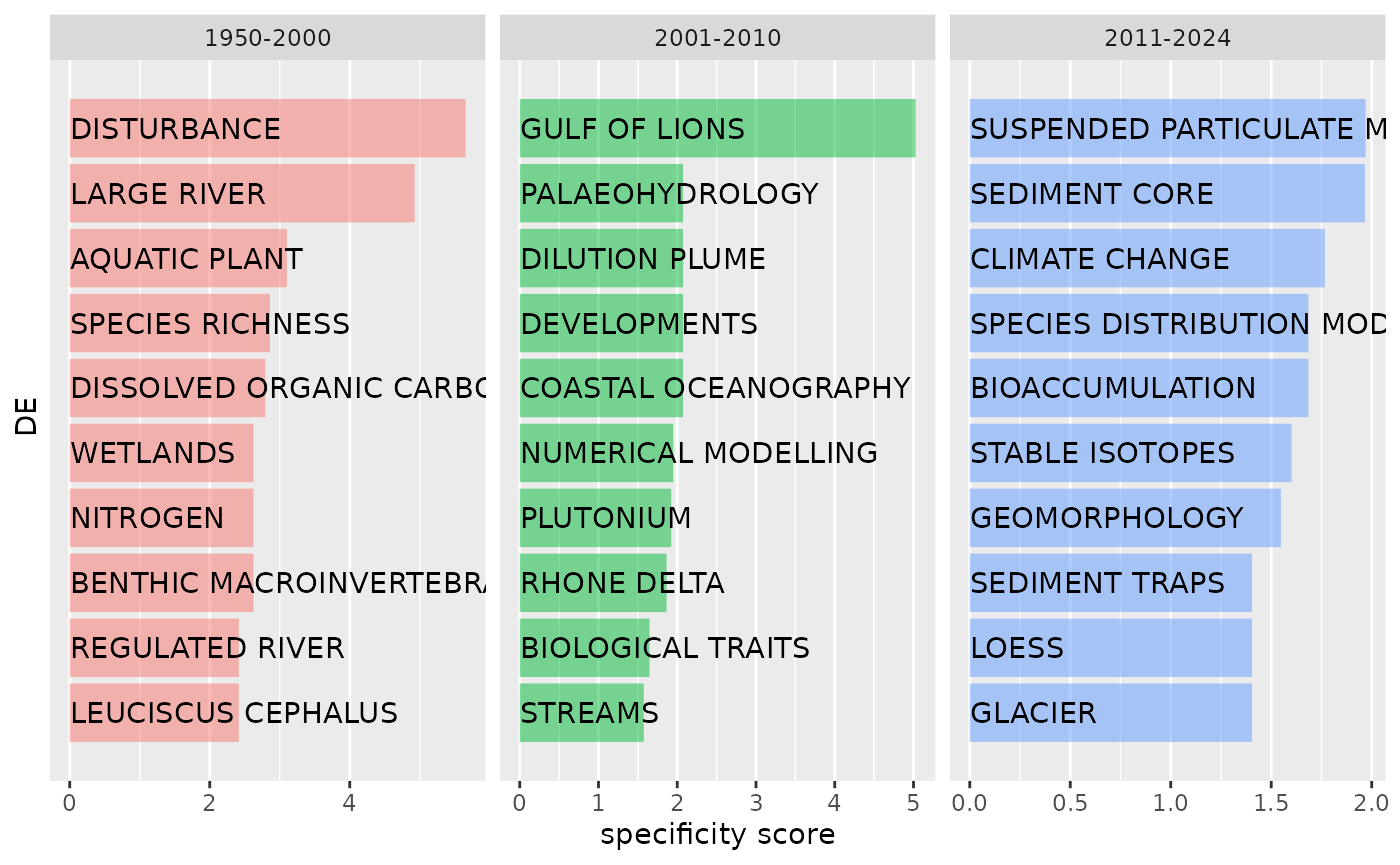Produce and display basic bibliometrics
produce_and_display_metrics.Rmd
library(bibou)
library(bibliometrix)
library(tidyverse)Table tib_doc
The table produced by bib_tib_doc() is structured as
one row = one document.
tib_doc=bib_tib_doc("data/savedrecs_clean.bib")
#>
#> Converting your isi collection into a bibliographic dataframe
#>
#> Done!
#>
#>
#> Generating affiliation field tag AU_UN from C1: Done!Based on this table we can produce a variety of tabular and
graphical results using tidy tools (especially
dplyr and ggplot2). For instance, we can study
the number of documents per publication year, or type, or source.
Example: number of documents per publication year
tib=tib_doc %>%
mutate(ntot=n()) %>%
group_by(PY,ntot) %>%
summarise(n=n(),.groups="drop") %>%
mutate(prop=n/ntot)
ggplot(tib, aes(x=PY, y = prop))+
geom_col()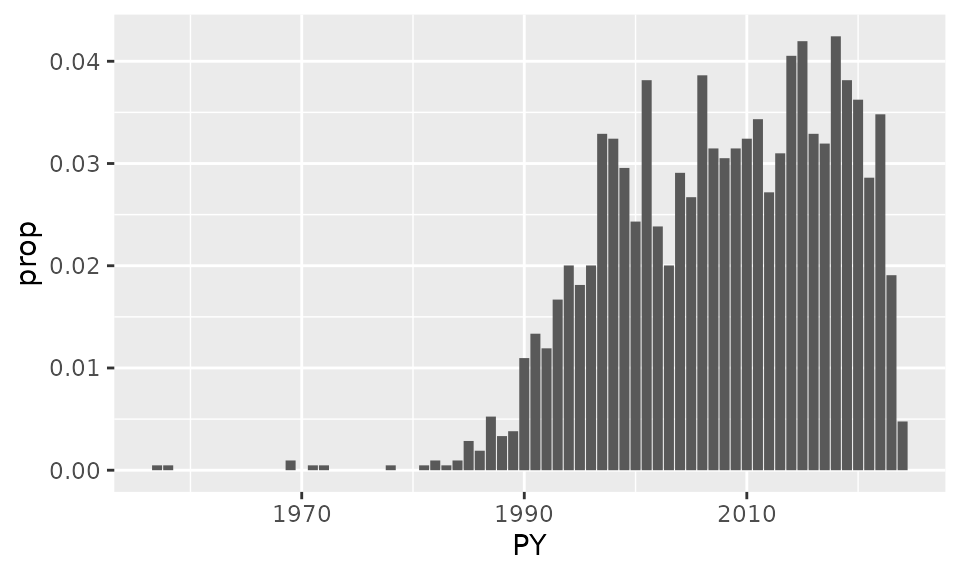
Example: number of documents per publication year and source
Here, we will show the number of publications per year and per journal (showing only journals that account for a total of more than 25 documents).
tib=tib_doc %>%
group_by(SO) %>%
mutate(ntot=n()) %>%
group_by(PY,SO,ntot) %>%
summarise(n=n(),.groups="drop") %>%
mutate(prop=n/ntot) %>%
filter(ntot>=50)
ggplot(tib, aes(x=PY, y = prop,fill=SO))+
geom_col()+
facet_wrap(facets=vars(SO),ncol=1)+
theme(legend.position="none")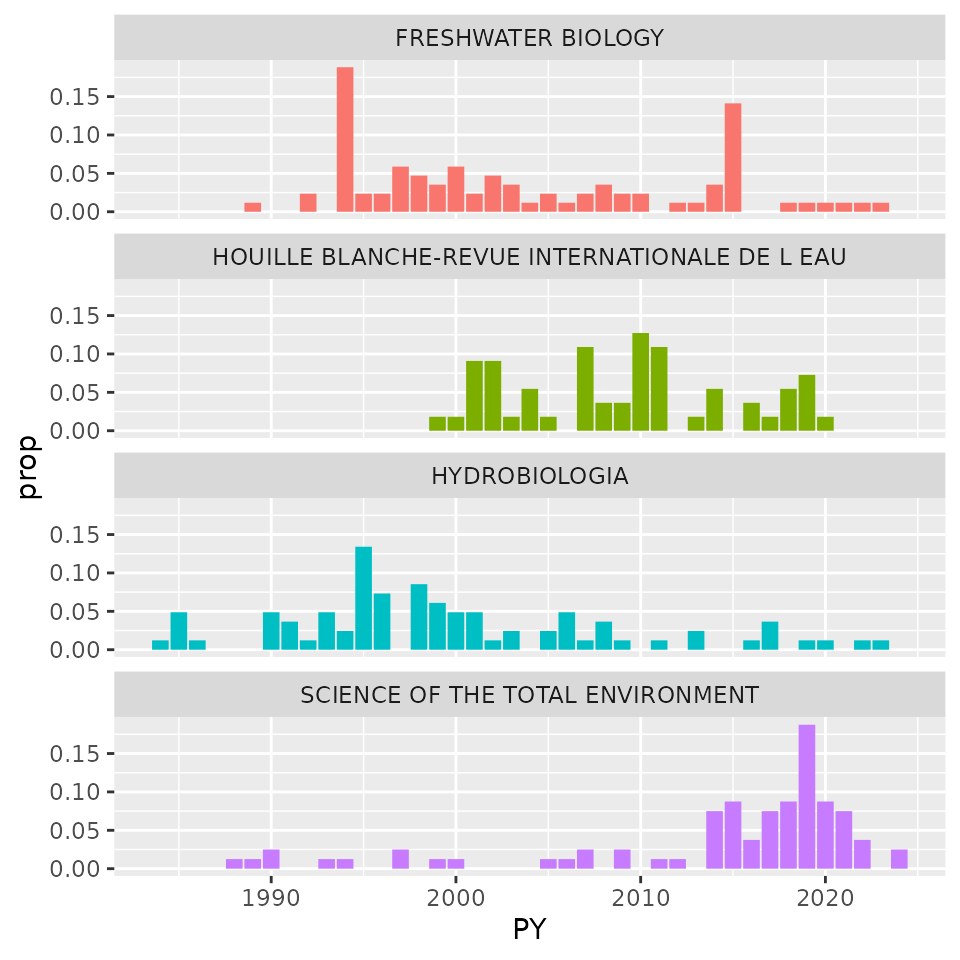
Table tib_doc_author
The table produced by bib_tib_doc_author() is structured
as **one row = one document*author**.
tib_doc_author=bib_tib_doc_author(tib_doc)It includes all descriptors originally in tib_doc,
with
- a modified
AUdescriptor (with only one author name per row) - an additional
AU_rankdescriptor (with author ranks from 1 to N where N is the number of authors for a particular document) - an addition
AU_weightdescriptor
The AU_weight descriptor for the \(i^{th}\) author of a document with \(N\) authors is equal to
\[\forall i \in [1,...,N]\space W_i=(N-i+1)/\frac{2}{N(N+1)}\] Hence for
- a document with a single author (N=1)
- \(W_1=1\)
- a document with two authors (N=2)
- \(W_1=0.666\) for the first author
- \(W_2=0.333\) for the second author
- a document with three authors (N=3)
- \(W_1=0.5\) for the first author
- \(W_2=0.333\) for the second author
- \(W_3=0.167\) for the third author
- etc.
This table enables to produce all kinds of summary statistics and graphics.
Example: number of documents per author
For instance, we can display the distribution of number of documents per author (possibly weighted by the author’s rank in each publication’s authors list):
tib=tib_doc_author %>%
group_by(AU) %>%
summarise(ndocs_weighted=sum(AU_rank),
ndocs=n())
ggplot(tib, aes(x=ndocs_weighted))+
geom_histogram()+
scale_x_sqrt(breaks=c(1,5,10,20,40,80))
#> `stat_bin()` using `bins = 30`. Pick better value with `binwidth`.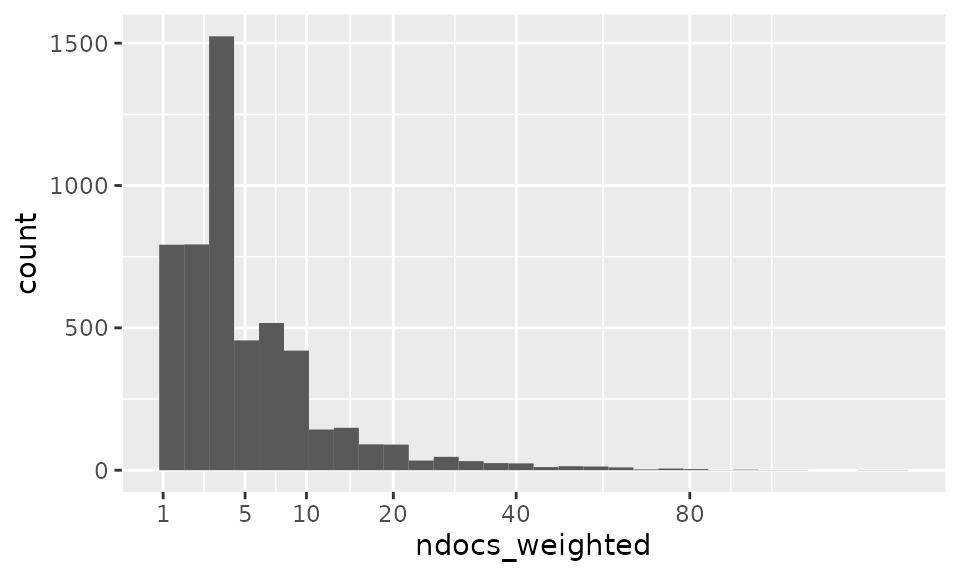
Example: authors with the most documents
The table calculated above makes it possible to assess which authors are represented the most in the corpus.
tib %>%
arrange(desc(ndocs_weighted)) %>%
head(10)
#> # A tibble: 10 × 3
#> AU ndocs_weighted ndocs
#> <chr> <int> <int>
#> 1 PIEGAY H 142 51
#> 2 RADAKOVITCH O 134 29
#> 3 RABOUILLE C 108 23
#> 4 MARMONIER P 107 37
#> 5 GREMARE A 95 15
#> 6 OLIVIER JM 93 22
#> 7 GARCIA F 86 4
#> 8 RAIMBAULT P 84 16
#> 9 BERNE S 83 14
#> 10 HEUSSNER S 80 17Table tib_doc_keyword
The table produced by bib_tib_doc_keyword() is
structured as **one row = one document*keyword**.
tib_doc_keyword=bib_tib_doc_keyword(tib_doc)Most frequent keywords
This table can be used to produce a table and graphic showing the most frequently used keywords
tib=tib_doc_keyword %>%
group_by(DE) %>%
summarise(n=n()) %>%
arrange(desc(n)) %>%
slice_max(n,n=20)
tib
#> # A tibble: 20 × 2
#> DE n
#> <chr> <int>
#> 1 RHONE RIVER 151
#> 2 MEDITERRANEAN SEA 72
#> 3 FRANCE 59
#> 4 GULF OF LIONS 54
#> 5 RHONE 54
#> 6 MEDITERRANEAN 49
#> 7 SEDIMENT 48
#> 8 RIVER 43
#> 9 CLIMATE CHANGE 35
#> 10 FISH 35
#> 11 DISTURBANCE 28
#> 12 HOLOCENE 28
#> 13 ORGANIC MATTER 26
#> 14 MACROINVERTEBRATES 25
#> 15 SEDIMENTS 24
#> 16 FLOODPLAIN 23
#> 17 FLOODS 21
#> 18 SEDIMENT TRANSPORT 21
#> 19 CONNECTIVITY 20
#> 20 GULF OF LION 19The most frequent keywords can then be displayed as a graphic either directly through a ggplot2 plot or using package https://github.com/lvaudor/mixr.
mixr::plot_frequencies(tib,cat=DE,frequency=n,fill_fixed="dark blue")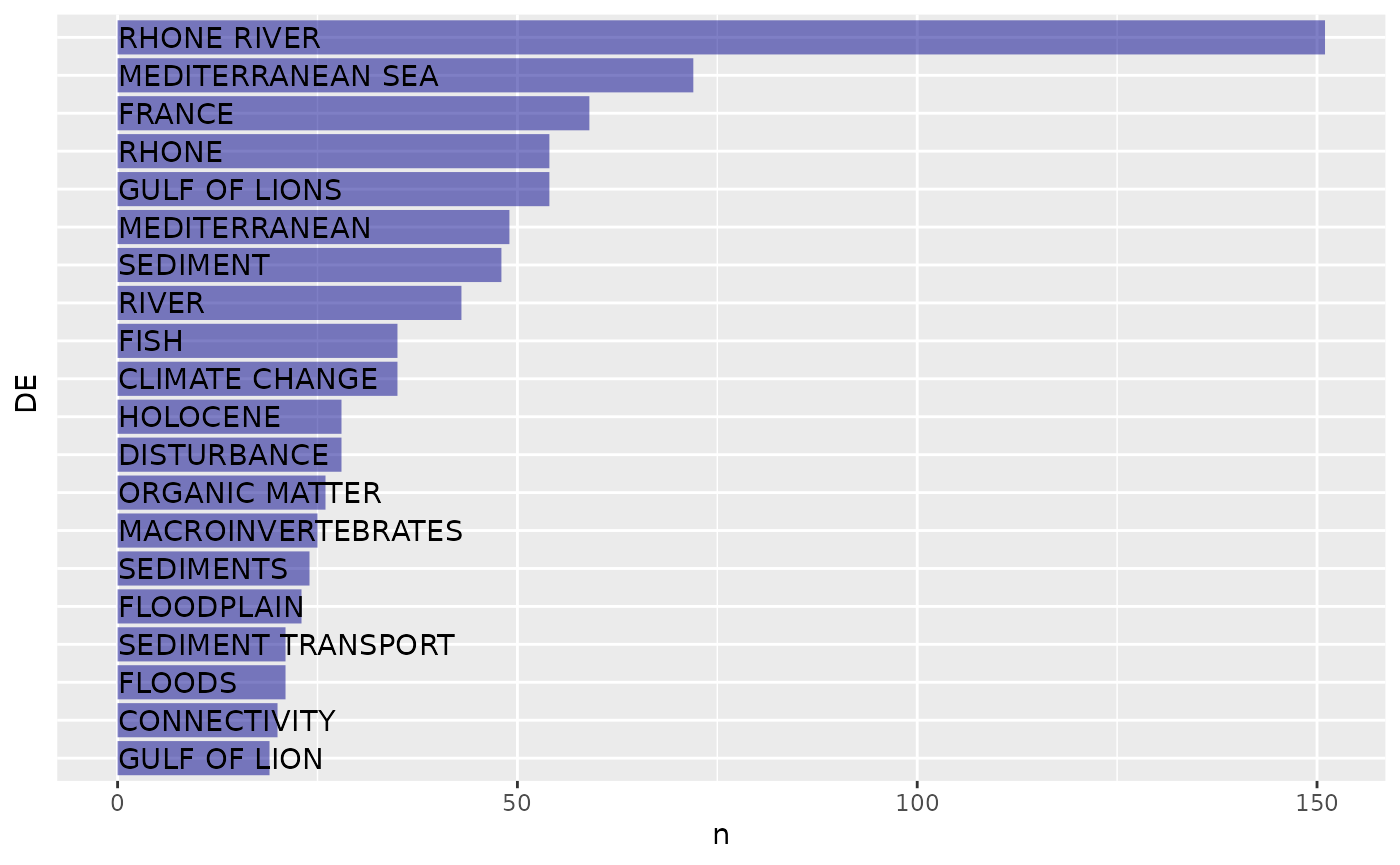
Keywords specific to a part of the corpus
One can also analyse the keywords which are specific to certain parts of the corpus. Let’s divide our present corpus into two parts, based on publication date:
tib_doc_keyword=tib_doc_keyword %>%
mutate(period=cut(PY,breaks=c(1950,2000,2010,2024),
labels=c("1950-2000","2001-2010","2011-2024")))We will use package https://github.com/lvaudor/mixr to calculate specificity scores of keywords regarding these periods.
df_spec=mixr::tidy_specificities(tib_doc_keyword,cat1=DE,cat2=period,top_spec=10)
mixr::plot_specificities(df_spec,DE,period)